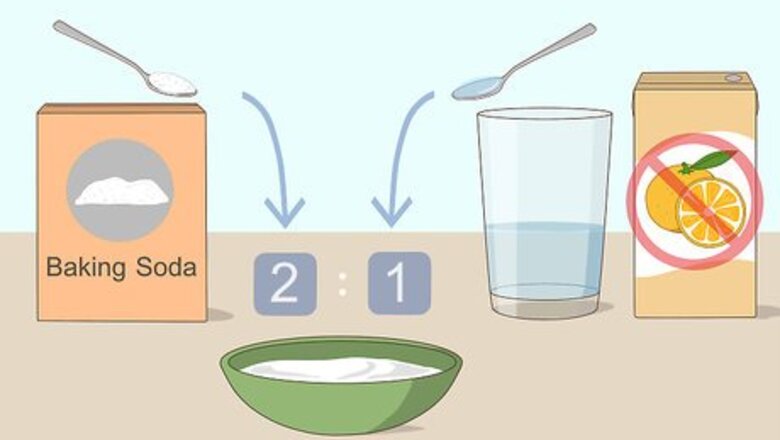
views
Brushing with a Baking Soda Paste
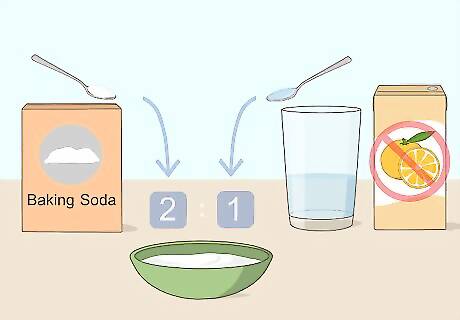
Mix baking soda and water. In a small cup, mix ¼ to ½ teaspoon (1½ to 3g) of baking soda with enough water to form a paste. A paste of about 2 parts of baking soda mixed with 1 part of water is easier to apply and more effective than baking soda alone. Avoid making a paste with baking soda and lemon, strawberry, or any other fruit juice. Fruit juices are acidic and could erode your teeth's enamel, especially when combined with baking soda or other abrasive products.
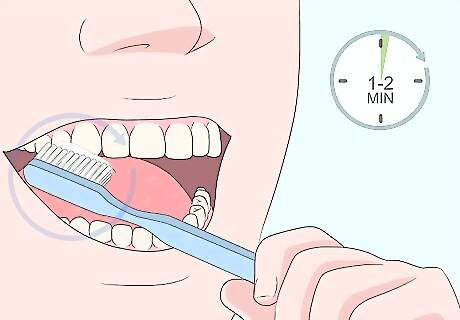
Brush your teeth with the baking soda paste for 1 to 2 minutes. Dip a soft-bristled brush into the paste, and gently scrub your teeth using circular motions. Brush all around instead of scrubbing 1 spot for the entire 2 minutes. Be sure not to brush hard or you might hurt your teeth. Alternatively, use your fingertips to gently rub your teeth with the paste. Rub in soft circles, and don’t use too much force. If you have receding gums, avoid brushing the base of your teeth and around your gum line with baking soda. The substance that covers your teeth below the gums is softer than enamel and prone to damage.
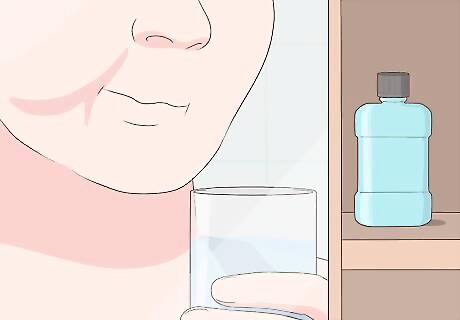
Rinse out your mouth when you’re finished brushing. After brushing for 2 minutes, spit out the baking soda and rinse your mouth with water or mouthwash. Give your toothbrush a thorough rinse as well. Note that you shouldn’t rinse after brushing with fluoride toothpaste, as rinsing reduces fluoride’s beneficial effects. For this reason, don’t brush or rinse with baking soda right after brushing with regular toothpaste. If you need to rinse away visible residue after using regular toothpaste, use as little water as possible.

Repeat every other day for up to 2 weeks. At most, brush your teeth with baking soda paste every other day for 1 to 2 weeks. Then cut back to doing it just once or twice a week. Since it’s abrasive, using baking soda more frequently may damage your teeth. Keep in mind that brushing your teeth with baking soda should not replace brushing your teeth with regular toothpaste. Brushing twice a day with fluoride toothpaste, flossing daily, and regular dental checkups are the best ways to keep your teeth healthy. Before brushing with baking soda, check with your dentist to see if your teeth are healthy enough for this method. Your teeth may be sensitive to abrasion, and baking soda may cause irreversible dental erosion.
Trying Alternative Methods
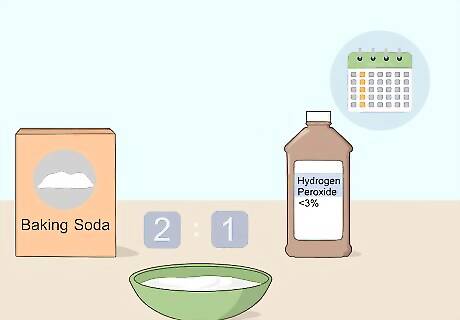
Mix 2 parts of baking soda with 1 part of 1% to 3% hydrogen peroxide. Hydrogen peroxide may whiten teeth, but you need to use it with caution. To try this method, mix 2 parts of baking soda with 1 part of 1% to 3% hydrogen peroxide to form a paste. Brush your teeth with the mixture for 1 to 2 minutes, then rinse with water. Make sure you use hydrogen peroxide with a concentration of 3% or less. Brush with hydrogen peroxide and baking soda once a week at most. Stop brushing and rinse your mouth with cool water if you feel a burning sensation. Don’t use this method if you have receding or sensitive gums, as hydrogen peroxide can cause irritation and damage exposed roots.Safety tip: It's important to rinse out your mouth thoroughly after using hydrogen peroxide. Even diluted solutions can cause vomiting and stomach upset if ingested. Additionally, any residue left behind could bleach your teeth and lead to uneven whitening.
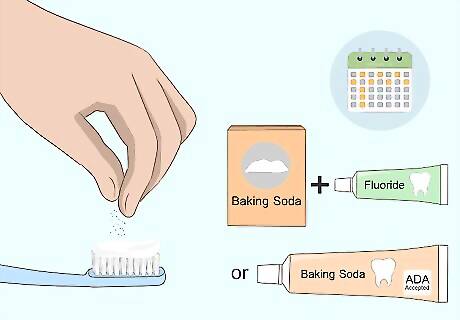
Brush your teeth with a mix of baking soda and fluoride toothpaste. Squeeze your regular toothpaste onto your toothbrush, then sprinkle a pinch of baking soda on top. Brush your teeth as you normally would for 2 minutes with soft, circular motions. Then spit and, if you need to rinse away white residue, swish your mouth with a little water. As with a baking soda and water paste, brush with baking soda and toothpaste in moderation. Try it every other day for 1 to 2 weeks at first, then brush with baking soda once or twice a week at most. You can also purchase a toothpaste that already contains baking soda. In the United States, look for a product that carries the ADA (American Dental Association) Seal of Acceptance, and use it as directed. If you have sensitive teeth or dental erosion, avoid using toothpaste that contains baking soda or is branded as whitening products.
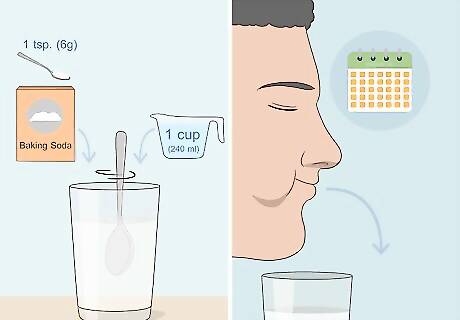
Gargle with a baking soda and water rinse. Combine 1 teaspoon (6 g) of baking soda and 1 cup (240 mL) of water in a glass, then stir the mixture until the baking soda is evenly distributed. Take a sip, gargle for about 30 seconds, then spit out the mixture. Repeat the steps until you’ve finished the entire glass. The baking soda rinse won't erode your teeth, so it's safe to gargle with it daily. Gargling with a baking soda rinse whitens your teeth indirectly. Baking soda neutralizes acids, so it helps fight dental erosion caused by acidic foods and beverages. It can also help fight bacteria that cause decay and promote good bacteria that create a protective layer on your teeth.











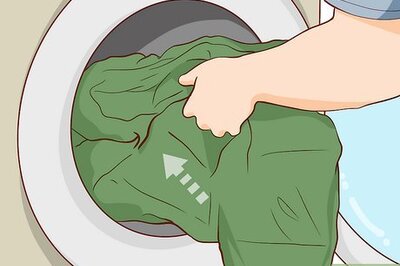







Comments
0 comment